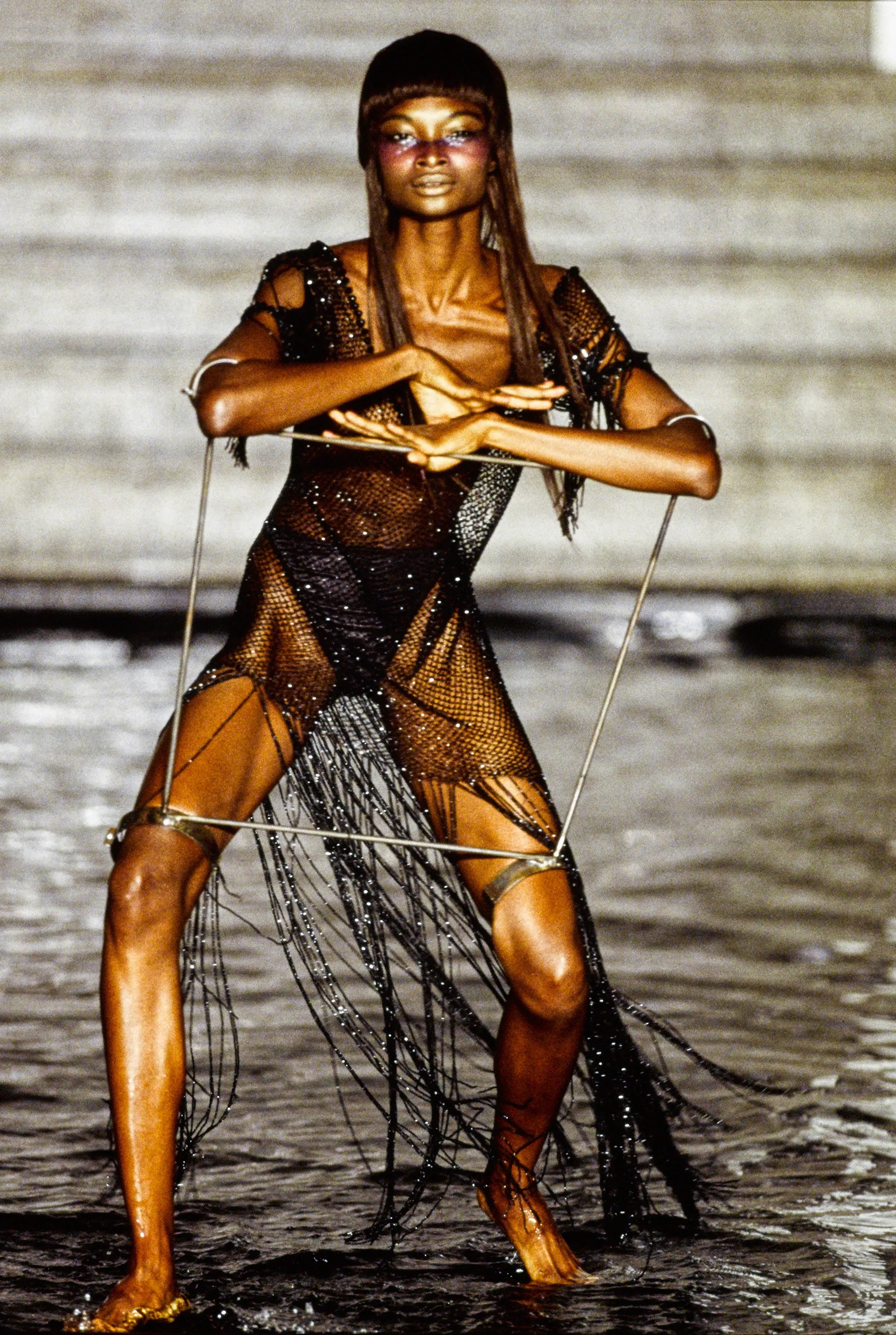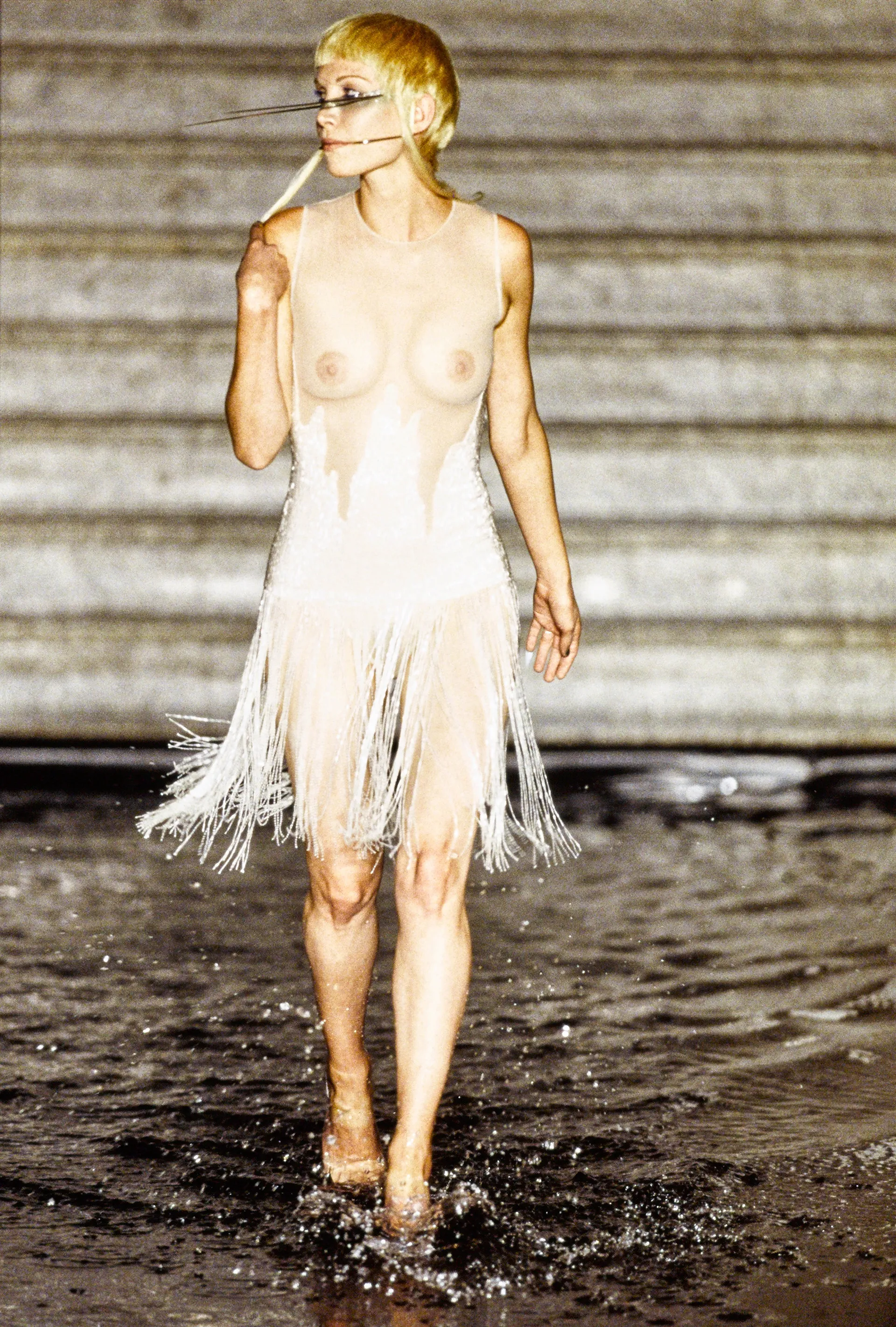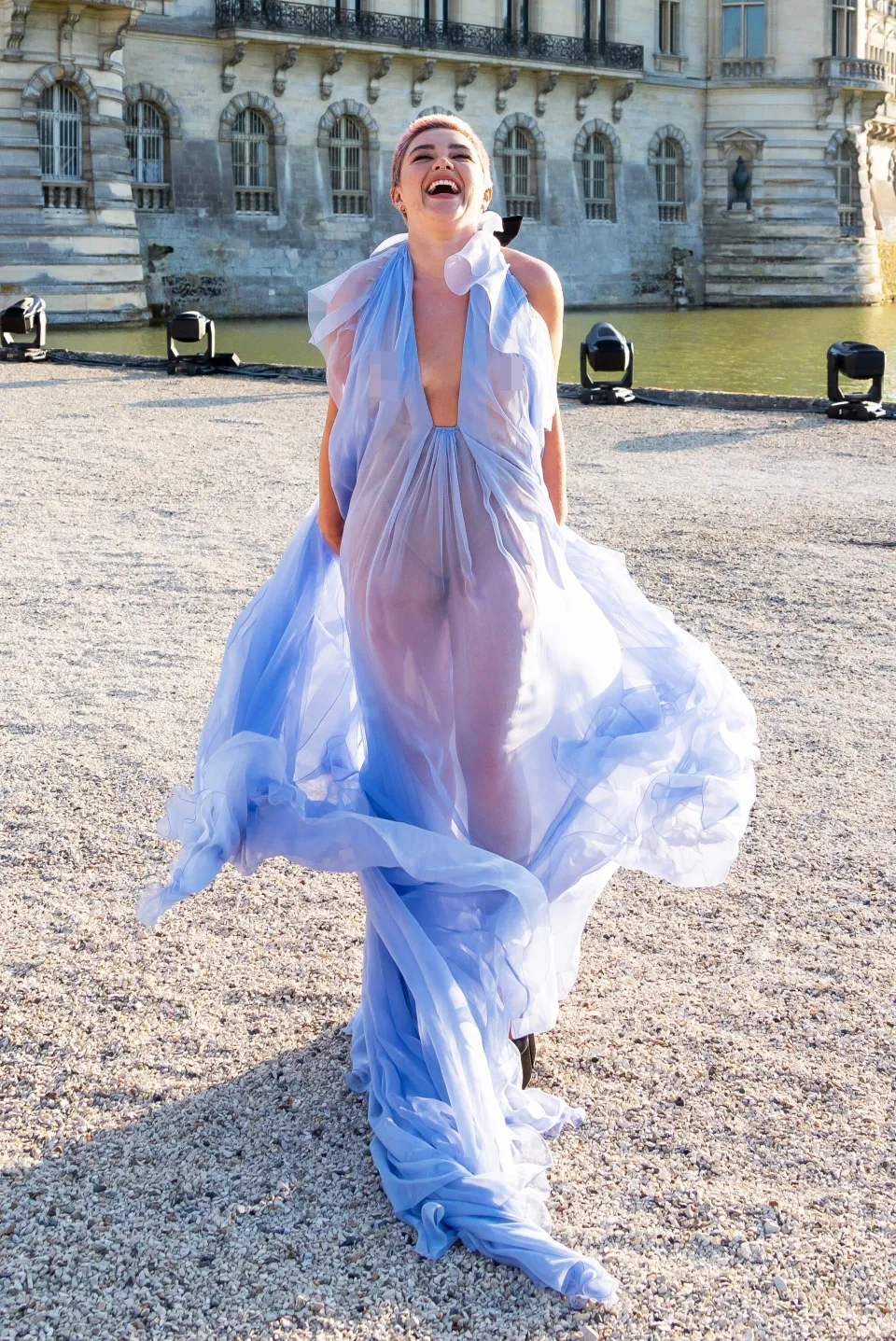Trend Tuesdays: How The Sheer Trend Went From Political Statement To Casual Style
- bethanyboyo
- Aug 8, 2023
- 3 min read
By Valentine Fabre

Vittorio Zunino Celotto / Getty Images
Alongside the 90s fashion revival, there is a trend that has transcended time and even public opinion: the sheer trend. Despite making a much more subtle comeback, the sheer trend is in itself a big part of women’s liberation, as well as the fight toward bodily autonomy.
The year is 1996. Walking down a watery runway (inspired by Hans Bellmer’s work) is a model with hands and knees attached to a metallic square-shaped structure, wearing a beautiful fringed, glittering black sheer dress that is about to make history. She has no bra and a fallen sleeve, this is Alexander McQueen's SS97 collection 'La Poupée', also known as one of the designer’s most controversial shows because of its - obvious - connotations to slavery. As per the look, it exuded a provocative vulnerability so symbolic of this collection, and Lee McQueen himself.
Alexander McQueen SS97 'Le Poupée' (Vogue.com)
Twenty-five years later, 'La Poupée' has officially entered the archive of historical moments of the fashion industry, whilst the sheer trend has become a staple for weddings, red carpets, and casual wear. Worn by the likes of Florence Pugh, Zoe Kravitz, Naomi Campbell, and Charli XCX. Nonetheless, despite its renewed place in society, the sheer trend has had a long history of political statements, provocative stories, and overall viral moments.
To skim through the vastness of fashion history, sheer fabric was, in the 18th century, highly associated with French Courtesans. Paintings such as 'The Portrait of a Young Woman in White' demonstrated proximity to Greek art, which was at the centre of inspiration at the time. However, this fashion trend was rapidly mocked and caricatured by men, most famously by painter Isaac Cruikshank and his 'Parisian Ladies in their Winter Dress for 1800' drawing, in which four women are depicted wearing see-through dresses.
The trend died down again until the 90s, notably in 1998, which saw Rose McGowan defeat all expectations when she walked down the VMA red carpet in a black, backless beaded sheer dress. As the headlines went crazy over the look, it became a truly iconic moment within fashion and society at large. More than two decades later, the Charmed actress admitted that the dress was more than just an outfit, but rather a political stance; "It was my first public appearance after being raped (ed. by Harvey Weinstein). And I thought, it was kind of like Russell Crowe in Gladiator when it comes out in the ring, and he’s like, 'Are you not entertained?"' McGowan told Jameela Jamil for her podcast 'I Weigh'.
Florence Pugh & Zoe Kravitz
In 2014 the 'Free the Nipple' when the campaign took over liberal-feminist discourses, the sheer trend was still considered a provocative statement. In fact, in 2014, when Rihanna arrived at the CFDA Awards in a long sheer dress embezzled with 216,000 Swarovski diamonds, with a simple skin tone thong (which she later admitted she have worn alone), the singer made fashion history. Fast-forward to 2022 and Florence Pugh’s majestic pink Valentino ballgown, which she wore during the brand’s couture show in Rome. The actress received disproportionate backlash because of her visible bare chest. Through an Instagram post, the 'Midsummer' actress responded to critics "What’s been interesting to watch and witness is just how easy it is for men to totally destroy a woman’s body, publicly, proudly, for everyone to see. You even do it with your job titles and work emails in your bio..?"
It is fair to say that the sheer trends' long history with body politics has made it a formidable trend, as either a political or fashion statement. Its timelessness has made women bolder and more confident in loving their bodies, it has in fact become more than a trend.









Comments